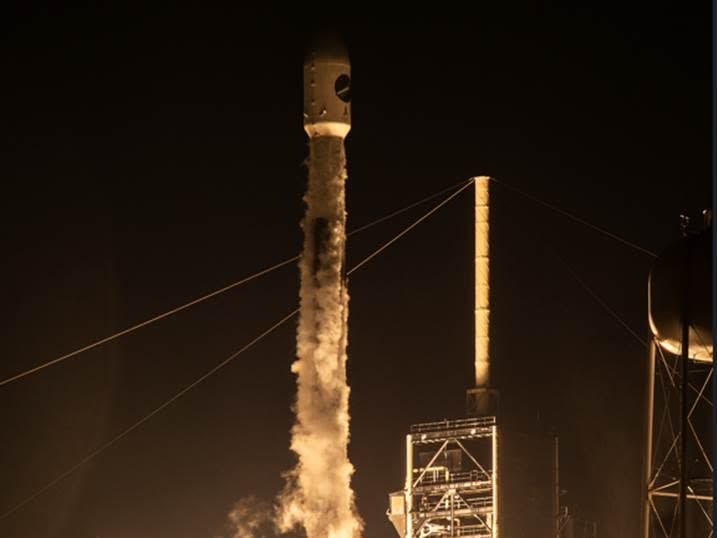X-37B: A Quantum Leap in Space Exploration
 The Tech Times
The Tech Times
In a significant milestone for the United States Space Force, the X-37B spaceplane has embarked on a new mission, launched atop a SpaceX Falcon 9 rocket from NASA's Kennedy Space Center in Florida. This mission is not only a testament to the growing collaboration between government space agencies and private companies but also a harbinger of the future capabilities that quantum technology and advanced communication experiments can unlock in space exploration.
A Stealthy Spaceplane with a Mission
The Boeing-built X-37B, also known as the Orbital Test Vehicle (OTV), is a reusable, unmanned spacecraft that has intrigued both the public and the scientific community since its first launch in 2010. Although its specific tasks often remain classified, the X-37B has been pivotal in testing advanced technologies in orbit, contributing to the United States' strategic capabilities in space.
The current mission, however, is particularly noteworthy due to its focus on quantum experiments and communications technology. Quantum mechanics, a field known for its complexity and counterintuitive principles, has the potential to revolutionize computing and secure communications. By conducting experiments in the vacuum of space, the X-37B offers a unique environment that can enhance the accuracy and scope of quantum research.
Historical Context: The Evolution of Space Technology
The X-37B is a product of decades of technological evolution and strategic foresight. The concept of reusable space vehicles dates back to the Space Shuttle era, designed to reduce the costs of launching payloads into orbit. However, unlike the manned Space Shuttle, the X-37B's unmanned design allows for longer missions and the ability to operate without the limitations imposed by human life support systems.
The spacecraft's design and operation are reminiscent of the Cold War era's emphasis on space as the next frontier for strategic dominance. However, the X-37B's missions have gradually shifted focus from military applications to scientific research, reflecting the modern era's emphasis on technological supremacy and innovation.
The Role of SpaceX: A New Era of Collaboration
The choice of a SpaceX Falcon 9 rocket for this mission highlights the increasing role of private companies in national space initiatives. SpaceX, with its track record of innovation and cost-effective launch solutions, has become a critical partner in expanding the United States' capabilities in space.
This collaboration underscores a broader trend in the aerospace industry—where government agencies leverage the agility and innovative spirit of private enterprises to achieve their objectives. The Falcon 9, renowned for its reusability and reliability, provides an ideal platform for such high-stakes missions.
Future Implications and Closing Thoughts
The launch of the X-37B carrying quantum and communication experiments represents a significant step towards realizing the full potential of space-based technologies. The advancements made during this mission could lead to breakthroughs in quantum computing and secure communications, potentially transforming the way data is processed and transmitted.
Moreover, this mission exemplifies a strategic vision where space exploration is not just about reaching new frontiers but about fundamentally enhancing our technological capabilities on Earth. As the boundaries between military, scientific, and commercial space endeavors continue to blur, partnerships like the one between the Space Force and SpaceX will be crucial in shaping the future of space exploration.
In conclusion, the X-37B mission is more than just a leap into space; it is a quantum leap into a new era of technological advancement. As we watch this mission unfold, it is a reminder of the vast potential that lies at the intersection of innovation, collaboration, and exploration.
Source: Space Force launches X-37B carrying quantum and comms experiments
Subscribe to my newsletter
Read articles from The Tech Times directly inside your inbox. Subscribe to the newsletter, and don't miss out.
Written by
